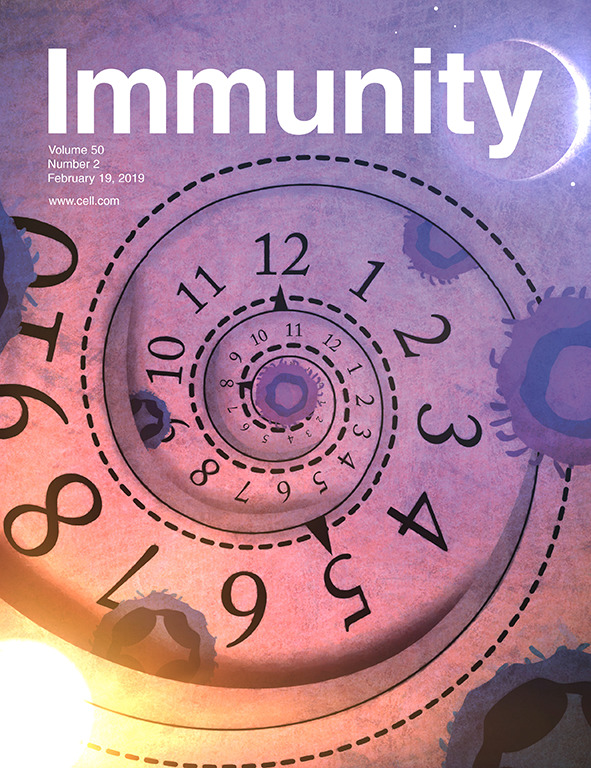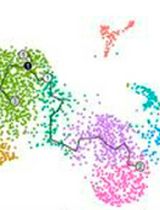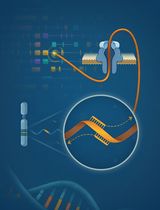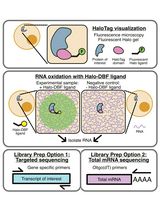- EN - English
- CN - 中文
Application of a Modified Smart-seq2 Sample Preparation Protocol for Rare Cell Full-length Single-cell mRNA Sequencing to Mouse Oocytes
一种改良的Smart-seq2样品制备方案在小鼠卵母细胞中应用稀有细胞全长单细胞mRNA测序
发布: 2019年08月20日第9卷第16期 DOI: 10.21769/BioProtoc.3345 浏览次数: 6910
评审: Gal HaimovichShyam SolankiVaibhav B. Shah
Abstract
Endogenous retroviruses (ERV) are transposable retroelements that form ~10% of the murine genome and whose family members are differentially expressed throughout embryogenesis. However, precise regulation of ERV in germ cells remains unclear. To investigate ERV expression in oocytes, we adapted a single-cell mRNA-sequencing library preparation method to generate bulk sequencing libraries from growing oocytes in a time- and cost-efficient manner. Here, we present a modified Smart-seq2 protocol that yields full-length cDNA libraries from purified RNA obtained from low numbers of pooled immature or mature oocytes. Using this method, RNA-sequencing libraries can be generated from any rare or difficult-to-isolate populations for subsequent sequencing and retroelement expression analysis.
Keywords: Oocyte (卵母细胞)Background
Endogenous retroviruses (ERV) are retrovirus-like mobile DNA elements that form ~10% of the murine genome, and are expressed in both healthy tissues and disease states (Kazazian and Moran, 2017; Johnson, 2019). Expression of ERV families is tissue-specific (Faulkner et al., 2009), and many families of ERV are temporally and differentially regulated throughout embryogenesis (Peaston et al., 2004; Rowe and Trono, 2011). We observed that proviral ERV are globally dysregulated in C57BL/6N, but not C57BL/6J, mice, secondary to loss of two transcriptional repressors, suppressor of non-ecotropic ERV (SNERV)-1, and SNERV-2, that promote heterochromatinization at ERV loci (Treger et al., 2019). We observed that in the absence of SNERVs in C57BL/6N mice, ERV are upregulated in a variety of immune cells, as well as in murine embryonic fibroblasts and embryonic stem cells. To identify whether ERV dysregulation is similarly present in gametes, we needed a cost-effective method to successfully generate cDNA sequencing libraries from pooled samples of growing oocytes.
While primordial oocytes can now be efficiently isolated from fetal and neonatal ovaries by flow cytometry (Stewart et al., 2015), antral germinal vesicle (immature) and metaphase II-arrested (mature) oocytes require a technique employing microdissection of superovulated ovaries (Seli et al., 2005; Duselis and Vrana, 2007; Litscher and Wassarman, 2010; Stein and Schindler, 2011; Guzeloglu-Kayisli et al., 2012;). While superovulation increases the yield of immature and mature oocytes, only ~20-30 ovulated oocytes per mouse can be reliably obtained through this method (Litscher and Wassarman, 2010). Prior studies have generated mRNA sequencing libraries from ~700-1,500 oocytes ( Smallwood et al., 2011; Veselovska et al., 2015; Gahurova et al., 2017), whose isolation represents a significant investment of both time and money.
The transcriptomes of immature (GV) and mature (MII) oocytes have been successfully sequenced by single-cell RNA-seq (scRNA-sesq) technologies (Tang et al., 2010; Xue et al., 2013). scRNA-seq permits the identification of cell-to-cell heterogeneity in a sample by detecting high-abundance cellular transcripts (Liu and Trapnell, 2016; Picelli, 2016; Choi and Kim, 2019), and circumvents the need to isolate large numbers of oocytes for bulk sequencing library preparation. However, our aim was to sensitively detect even low-abundance retroelement transcripts in growing oocytes and to detect differential expression between substrains. For this goal, scRNA-seq was not a suitable technique. Additionally, a high percentage of repeat element sequencing reads map to multiple locations in the genome and transcriptome, and their mapping accuracy is improved by using longer sequencing read lengths and paired-end reads (Treangen and Salzberg, 2011). Importantly, while many scRNA-seq methods amplify only the 3′ end of polyadenylated transcripts, the Smart-seq2 method is a low-cost protocol that generates full-length cDNA from mRNA transcripts (Picelli et al., 2014; Haber et al., 2017; Ziegenhain et al., 2017) and could further improve mappability of repeat-associated reads. For these reasons, we developed a modified Smart-seq2 protocol to generate full-length cDNA libraries from low numbers of pooled oocytes for bulk sequencing to permit subsequent analysis of transposable element expression.
This Smart-seq2-based protocol provides a cost-effective method to generate libraries for bulk mRNA-sequencing of oocytes, which results in data suitable for downstream analysis of population-level differences in retroelement expression. This protocol can be further modified to generate sequencing libraries from any rare or difficult-to-isolate population, with broad applications ranging from analysis of transduced primary cells with low transduction efficiency to investigation of transcriptional differences in scarce tissue-resident immune cell populations.
Materials and Reagents
- 30 gauge needles (BD, catalog number: 305128)
- 100 mm Petri dish (Falcon, catalog number: 351029)
- 1.5 ml autoclaved sterile microcentrifuge tubes (USA Scientific, catalog number: 1615-5500)
- SHARP Precision barrier tips (Denville, catalog numbers: P1120, P1121, P1122, P1126)
- Twintec PCR 96-well PCR plates, colorless (Eppendorf, catalog number: 951020401)
- Microseal B PCR Plate Sealing Film (Bio-Rad, catalog number: MSB1001)
- Qubit Assay tubes (ThermoFisher, catalog number: Q32856)
- 200 μl pipette tip (Fisherbrand, catalog number: 02-681-147 or equivalent)
- Pregnant mare serum gonadotropin (Biovendor, catalog number: RP1782721000)
- Human chorionic gonadotropin (Sigma, catalog number: CG10-10VL)
- M2 medium (Millipore, catalog number: MR-015P-5F)
- Hyaluronidase (Sigma, catalog number: H4272)
- Milrinone (Sigma, catalog number: M4659)
- RNase Away (Ambion, catalog number: 10328011)
- β-mercaptoethanol (Sigma, catalog number: M6250)
- RLT buffer (Qiagen, catalog number: 79216)
- Dry ice
- RNeasy Micro Kit (Qiagen, catalog number: 74004)
- Ultrapure water (AmericanBio, catalog number: AB02128)
- RNAClean XP beads (Agencourt, catalog number: A63987)
- 80% ethanol
- 10 mM dNTPs (Thermo Fisher, catalog number: R1092)
- RNase Inhibitor (Takara, catalog number: 2313A)
- Maxima RNase H-minus RT 5x Buffer (Thermo Fisher, catalog number: EP0751)
- Maxima RNase H-minus RT (Thermo Fisher, catalog number: EP0751)
- Betaine (Sigma, catalog number: 61962)
- 1 M MgCl2 (Sigma, catalog number: M1028)
- Kapa HiFi HotStart ReadyMix (Kapa Biosystems, catalog number: KK2601)
- AMPure XP beads (Agencourt, catalog number: A63882)
- 70% ethanol
- TE buffer (AmericanBio, catalog number: AB14033)
- Qubit dsDNA HS Assay Kit (Thermo Fisher, catalog number: Q32851)
- High Sensitivity DNA Kit (Agilent, catalog number: 5067-4626)
- Illumina’s Nextera XT Kit
- Oligos
- 3′ RT primer
5′-AAGCAGTGGTATCAACGCAGAGTACT30VN-3′ (Sigma)
Note: T30VN corresponds to 30 T’s followed by a “V” (A, C, or G), followed by an “N” (any base). - Template Switching Oligo
5′-AAGCAGTGGTATCAACGCAGAGTACATrGrG+G-3′ (Exiqon)
Note: “rG” stands for riboguanosine, while “+G” indicates that the last deoxyguanosine is modified to be a locked nucleic acid. - ISPCR
5′-AAGCAGTGGTATCAACGCAGAGT-3′ (Sigma)
Note: All oligos should be ordered as desalted and diluted to 100 μM using 0.1x TE and stored at -20 °C prior to use.
- 3′ RT primer
- Master Mix 1 (see Recipes)
- Master Mix 2 (see Recipes)
- Master Mix 3 (see Recipes)
Equipment
- Dissecting scissors (Fine Science Tools, catalog number: 91460-11 or equivalent)
- Curved tip forces (Fine Science Tools, catalog number: 11273-20 or equivalent)
- Watchmaker’s forceps (Fine Science Tools, catalog number: 11251-20 of equivalent)
- Dissecting microscope (Laxco, LMS-S2103-LS200 or equivalent)
- 1.0 ml pipette controller (Hamilton, catalog number: 0010PC)
- Aspirator tube assemblies for calibrated microcapillary pipettes (Sigma, catalog number: A5177-5EA)
- Capillaries without filament (World Precision Instruments, catalog number: 1B100-6)
- Vortex machine (Scientific Industries, catalog number: 00-SI-0236)
- Swinging bucket centrifuge (Eppendorf, model: 5810R)
- 96-well magnet plate (Alpaqua Magnum, model: FLX A000400 or equivalent)
- 96-well heated thermal cycler (Bio-Rad, model: S1000 or equivalent)
- Qubit Fluorometer (Invitrogen, model: Q33226 or equivalent)
- Agilent 2100 Bioanalyzer System (Agilent, G2939BA, G2953CA)
Procedure
文章信息
版权信息
© 2019 The Authors; exclusive licensee Bio-protocol LLC.
如何引用
Treger, R. S., Pope, S. D., Xing, X. and Iwasaki, A. (2019). Application of a Modified Smart-seq2 Sample Preparation Protocol for Rare Cell Full-length Single-cell mRNA Sequencing to Mouse Oocytes. Bio-protocol 9(16): e3345. DOI: 10.21769/BioProtoc.3345.
分类
分子生物学 > RNA > RNA 测序
发育生物学 > 细胞生长和命运决定 > 卵母细胞
您对这篇实验方法有问题吗?
在此处发布您的问题,我们将邀请本文作者来回答。同时,我们会将您的问题发布到Bio-protocol Exchange,以便寻求社区成员的帮助。
Share
Bluesky
X
Copy link












